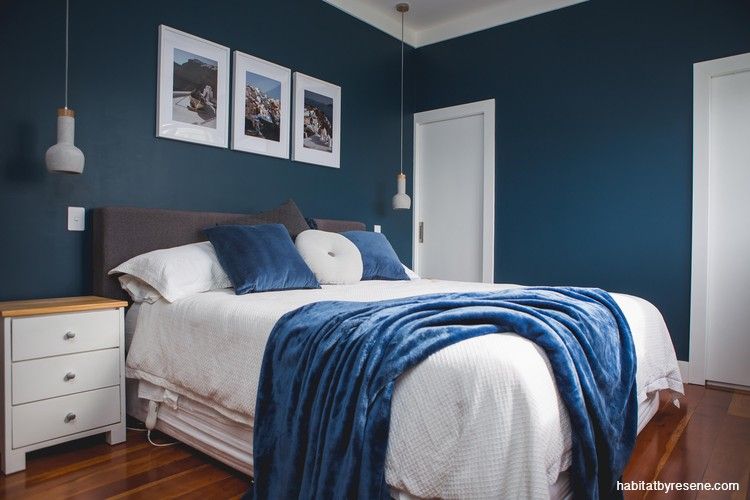Do you get up in the morning and still feel tired? Do you know that you are not getting enough sleep? You don’t have to research very far to read that many people today are sleep deprived and insufficient sleep can contribute to a host of physical and mental health issues. There is screeds of material outlining how to create a better bedroom environment conducive to sleep and establish some better night-time routines. Have a look at www.health.govt.nz/your-health/healthy-living/food-activity-and-sleep/sleeping/sleep-tips-adults or www.sleepinstitute.co.nz if you need to know how to make some changes to your sleep habits. You’ve heard all about the need for a good bed but have you ever thought about the colour of your bedroom? It may be the simple answer to help you create a better bedroom environment. Colour psychology shows that colours impact us all the time. It’s subtle but if you think about it, colours influence both our mood and our behaviour. Advertisers and marketers know this only too well, and use colour to evoke emotional reactions. By careful choice of colour in logos and brands, signage and packaging, advertisers hope to influence the choices consumers make, choosing one product over another or making an impulse purchase. Studies show that buyers primarily base their decision-making on visual appearance and colour. How many times have you simply had to buy that new outfit because it was ‘just your colour’. Because colours do influence our moods and feelings we should really apply the same principles to the choice of colour in our homes. Let’s take a closer look at the effects colours have on us. There’s plenty of detailed research to back this up but let’s take a simple approach. Colour Temperature Colours are separated into warm and cool colours. What do you think of when you see a big yellow sun? How do you feel looking at a deep blue pool of water? Reds, yellows and oranges produce feelings of warmth, while blues, greens and violets make you feel cooler. Warm colours are associated with feelings of happiness and excitement while cool colours tend to evoke feelings of calm and contentment. Colour Tone It’s not just the colour itself that is important, it is the strength of the colour as well – how light or dark it is. A light colour tone makes a space feel bigger and more airy by reflecting the light. A dark tone can close in a space, making it feel smaller and more cosy. Choosing Your Bedroom Colour Both warm and cool colours can be used for a bedroom, but there are a few things to think about. The first thing to consider when choosing a colour for your bedroom is how much light the room gets. A very light sunny room may need to be toned down with a slightly cooler colour whereas a dark room may require warming up. This can be achieved as much with the depth of tone of your colour choice as well. Paint Colours In Your Bedroom To Avoid And Why?
- Red – is associated with danger and is not known as a restful colour.
- Purple – although it is considered a regal and sophisticated colour it is also not relaxing and can contribute to dreaming and nightmares.
- Brown and Grey – dark shades of brown and grey can appear gloomy and dull and can bring a person’s mood right down.
- White – bright light white can appear cold and clinical, much like a hospital room so it’s good to steer away from a crisp white palette.
Paint Colours In Your Bedroom To Choose And Why?
- Blue and Green – are reputedly two of the best colours for the bedroom because they are natural colours that suggest calm and tranquillity. There have even been studies to show that blues and blue-greens can calm your mind, lower your blood pressure, reduce anxiety, and even slow your heart rate.
- Yellow and Orange – are cosy, warm colours that evoke feelings of comfort and relaxation, perfect for a restful bedroom atmosphere. You do need to be a little careful not to use too deep a tone however.
- Pink and Lavender – soft hues of lavender and pink are also restful colours that can be used for decorating
Paint Tones In A Bedroom Once again consider the size and relative light of the bedroom before settling on the tone of your paint colour. A less intense tone in a bedroom is considered a better choice. However, if you want to make a feature of the room you can paint one wall in a darker tone. Generally it is better to choose the wall against the head of your bed, to create a pleasing effect. Given the fact the majority of people spend one-third of their lives sleeping, it seems a good idea to create the best bedroom environment for rest. So, while red might be your favourite colour to wear, it might not be the best for creating an idyllic and blissful bedroom.

